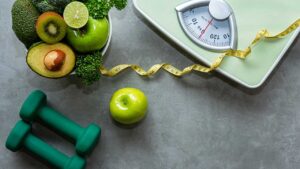Pour a little salad oil into half a glass of water and you’ll observe something you’ve probably heard many times: oil and water don’t mix. Even if you shake it up, the oil and water soon separate.

Which presents an interesting problem for your body. Certain oily substances, like fat molecules and parts of fat molecules, are absolutely essential to survival. They are used as fuel to generate energy in your muscles and other cells, they are an essential component of the basic structure of cells, and they are components of hormones like testosterone and estrogen that regulate and influence many body functions.
But blood is mostly water (and so is lymph, the other liquid that transports vital substances in your body), so how do those essential substances get from one place to another?
The answer is that they’re enclosed in a kind of container made of a different kind of molecule that does mix with water: a protein. That combination of oily molecules (which are also called lipids) and proteins is called a lipoprotein. [1]
You’ve likely heard of two types of lipoproteins. One of them has a relatively higher percentage of protein to fat than the other. That makes them relatively dense in terms of weight, so they’re called high density lipoproteins, or HDLs. The other has less protein and more fat, and is called low density lipoproteins, or LDLs.
LDLs and HDLs transport an oily substance that you could not live without, but which has unjustly been given a rather bad reputation: cholesterol. LDLs take cholesterol to places where it’s needed, and HDLs collect up loose cholesterol (such as cholesterol that was part of cells which have died) and takes it to the liver for processing.
Despite the name calling you’ll see in various places, neither of these lipoproteins are “bad”—they’re both absolutely necessary to your body’s normal operations. But their presence in your blood can be measured relatively easily, and medical professionals use that data as windows into how your body is working. Consequently, “HDL” and “LDL” are often heard in doctor’s offices. The better you understand them, the greater your ability to evaluate what you hear, and to make decisions that lead to improved health.
By the way, HDL’s and LDL’s are not the only types of vital lipoproteins in your body. The others will be discussed in Part 2 of this Insight.
1. Introduction to Lipids and Lipoproteins, National Center for Biotechnology Information Bookshelf (https://www.ncbi.nlm.nih.gov/books/NBK305896/)





